Andrew Thijssen from BMS E-motorrijder was so kind to share his driving experiences about his test drive with the Zero S ZF 6.5 kWh (Thx to Gert-Jan Rongen from Electric Motorbikes)
Zero Motorcycles in California is a well-known manufacturer of various types of electric motorcycles. Some of these motorcycles are designed for street use and focus on city and commuting distances. The Zero S with the small 6.5 kWh battery is one of them.
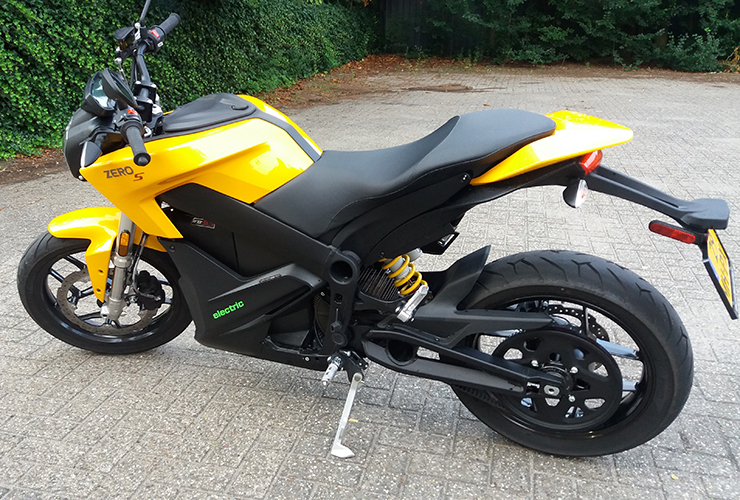
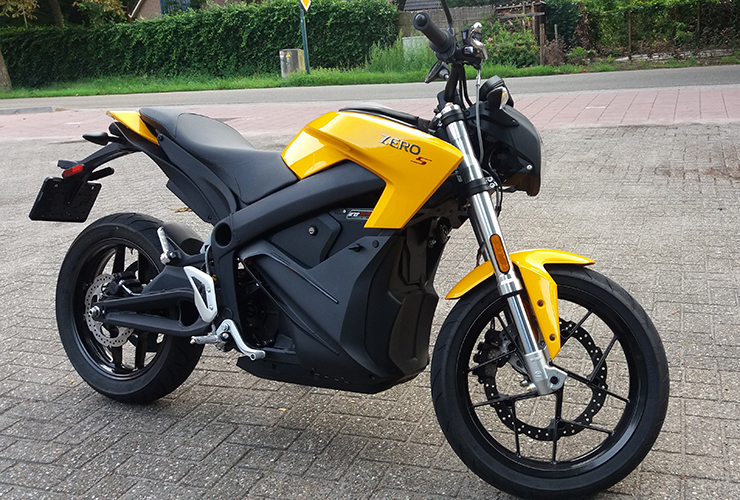
Equipment
The modest dimensions of the Zero are striking. The absence of an exhaust system reinforces that impression. The finishing touch is good. At the front, the Zero S is equipped with a 41 mm adjustable upside down Showa front fork. At the rear you will find an adjustable mono spring system of the same brand. The brakes are from the brand J-Juan. At the front a 320 mm single disc with a floating double piston caliper and behind a 240 mm disc with a single piston brake caliper. These brakes are linked to a Bosch ABS.
As far as the engine is concerned, you can choose from 3 different modes: Eco, Custom and Sport mode.
At the location of the tank is a sunken tank bag that is lockable and removable. Ideal for a charging cable and some other stuff. There is also a lockable storage space next to the battery due to the smaller battery.
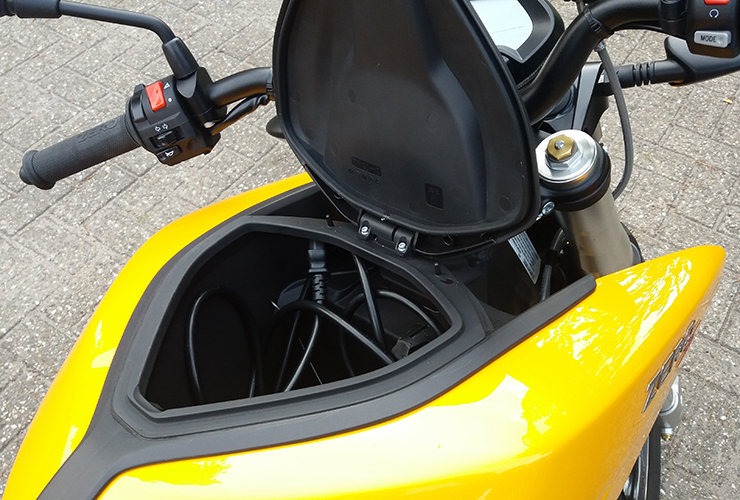
The drivers information is reasonably readable on the digital dashboard. You will find the battery status, charge indicator, the expected driving time, the output of torque and power, bluetooth coupling for the corresponding smartphone app (with which you can set the engine parameters, among other things), driving mode and the regeneration of energy when braking on the engine.
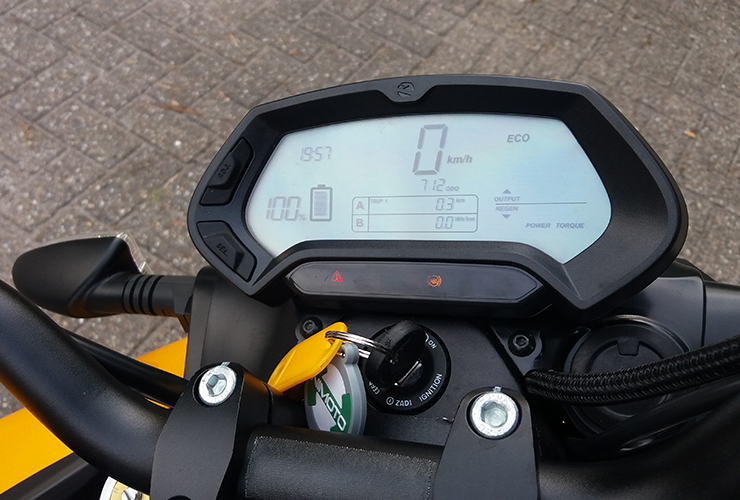
Engine and energy supply
The drive is done by a maintenance-free, high-efficiency, air-cooled and brushless Z-Force DC motor with permanent magnet. The required energy is provided by a Z-Force Li-Ion Intelligent battery pack of 6.5 kWh. The delivered power is 23 kW at 4150 rpm. The secondary drive is a silent belt. The torque has been reduced from 144 to 108 Nm for this 6.5 kWh version. Charging is done via an integrated charger suitable for a 230 V outlet. For an additional charge (€ 835, -) an extra 230V AC fast charger is available, reducing the charging time by half to 2.5 hours (100% charged).
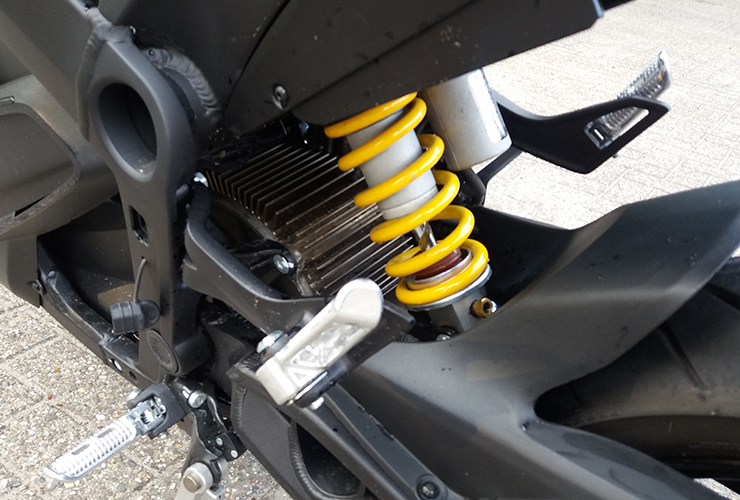
Driving experience
The double saddle is a comfortable seat, and has a sporty sitting position with a clear view of the digital dashboard. The knees are bent and the feet can easily touch the ground. The adjustable brake handle is easy to operate. The clutch is of course missing.
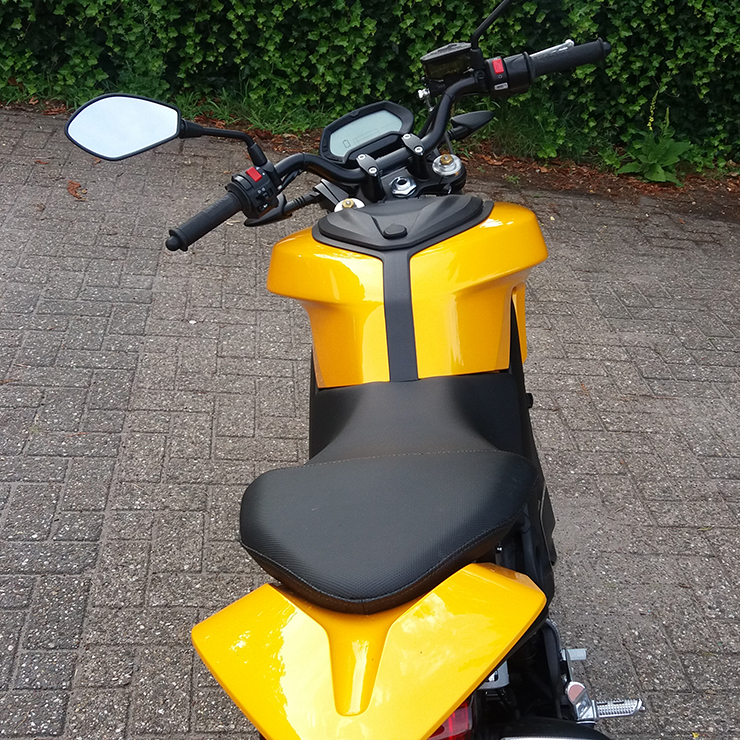
When activating the engine you only see a green flashing light. You can choose from the Eco, Custom and Sport modes via the right-hand half. Driving away is a matter of a twist on the “gas”. The Zero S feels very light due to the low weight of 142 kg. The big difference with a combustion engine is the silent and direct incoming powerful torque. Because there is no gearbox, the first meters are a bit weird, but because of the ever-present pulling power this gets used very quickly.
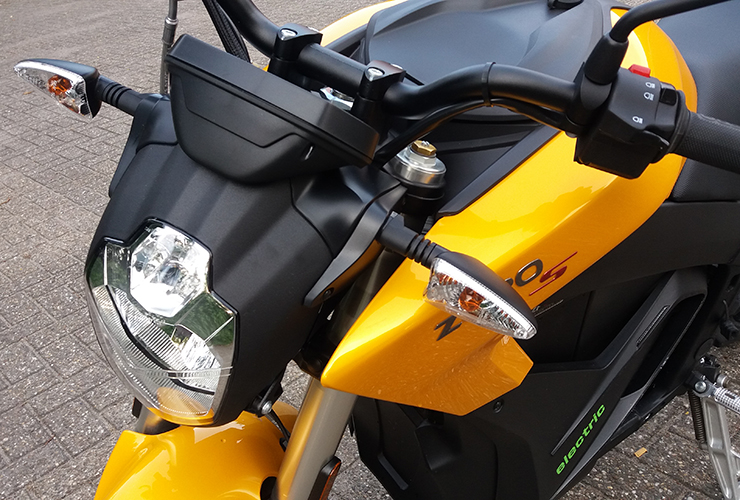
The Zero, despite its low power of 23 kW max and 11 kW (continuously) surprisingly pulls up quickly. From 100 km / h the real speed is out. With the stronger Zero’s, the difference between the different modes is immediately felt in power delivery. With this Zero S with 6.5 kWh battery that is not the case. You basically always drive in custom mode. The top is limited to 139 km / h. The steering characteristics are just right. The suspension is easily adjustable. Both the bicycle part and the suspension are fine, even on poorer roads. The Zero S is manoeuvrable and manageable, which is very pleasant in urban traffic, but also when it gets a bit faster.
The braking force can be better but is sufficient. The regenerative braking may be more powerful. The moderate braking effect would also be less noticeable here.
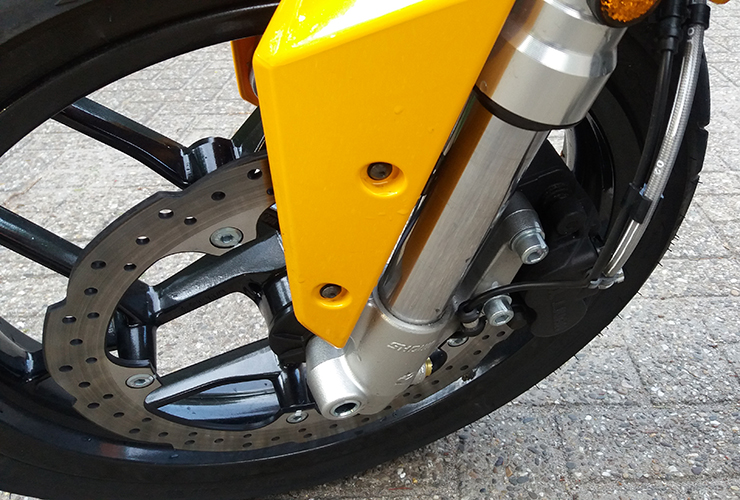
With the mounted Pirelli Diablo Rosso, the Zero S is at ease on curvy roads. A little drive on the highway is also possible, here the bicycle part feels stable. Due to the lack of wind protection you do catch all the wind. The visibility in the vibration-free mirrors is good. The absence of engine heat is pleasant during hot weather in city traffic.
Driving distance
How far can he go? The Zero S is equipped with the ZF 6.5 kWh battery. With normal commuter traffic on only B roads, a practical range of 80 km is feasible. On the highway, the range is less of course. Also strong headwinds negatively affect the range. At city traffic or small inner roads you get around 95 km. From 0% you can add another km or 10 as a home-comer.
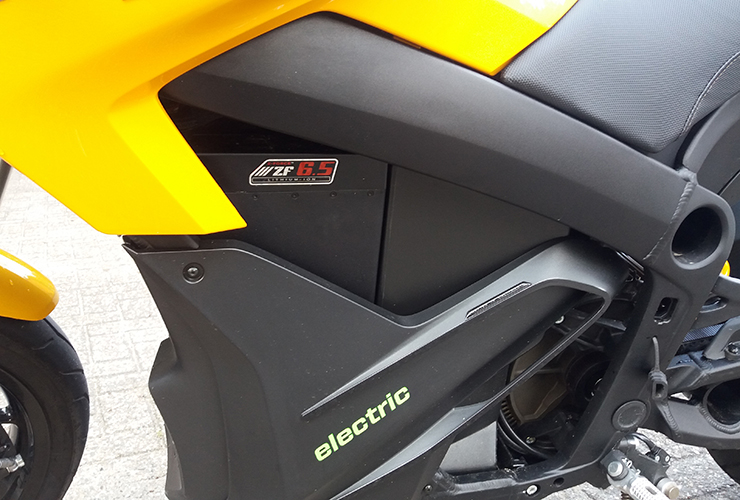
Charging
When the motorcycle is parked or not in use, you can use this time to “plug in”, for instance at work or your visited place. You can leave with a (nearly) full battery which significantly increases the range. Loading is not recommended in the full rain in connection with a non-waterproof plug and the Zero does not charge below 0 degrees Celsius, if you want to load outside. You can drive up to -35 degrees with the Zero. In between, plugging in the plug is possible almost everywhere with the standard plug. Since you never drive empty, one hour is often sufficient, for example, to make a ride after dinner. The optional fast charger can be placed in a backpack. To use this fast charger you must have two sockets available. These can be connected to the same group.
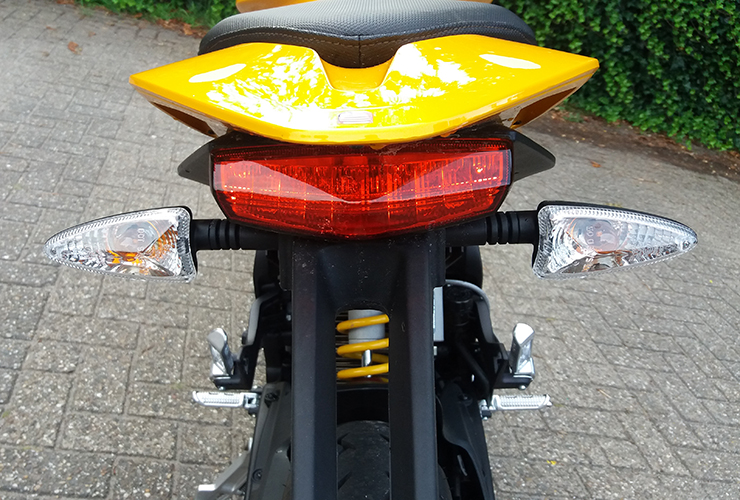
Conclusion
The Zero S in 6.5 kWh version is a practical electric motorcycle with good driving characteristics. Excellent for city and commuter traffic. The Zero can easily be recharged anywhere and at any time. Taking along any DC fast charger is a bit clumsy.
The brakes are sufficient for normal use but would come out better with more regenerative braking power of the engine. The absence of engine heat is particularly pleasant in urban use. At temperatures below 10 degrees you miss the extra engine heat, especially on the outside roads (but who is complaining?)
Keeping the motorcycle clean is easy due to the many flat parts. A long tour is not the favourite thing of the Zero S, but a nice drive (and back!) to the office or a little trip on a Sunday afternoon is no problem.
The price of € 12700, – is substantial. The low energy and maintenance costs compensate that for the most part on the long term. For business users, there are interesting tax benefits. You are also prepared with this machine for the increasingly stringent restrictions for motorized traffic in urban areas. The buyer of this Zero will do this deliberately whether or not with sustainability in mind and will certainly not be disappointed.
Follow Andrew on Facebook >
Website Zero Motorcycles >
Website Electric Motorbikes The Netherlands >
All pictures copyright Andrew Thijssen